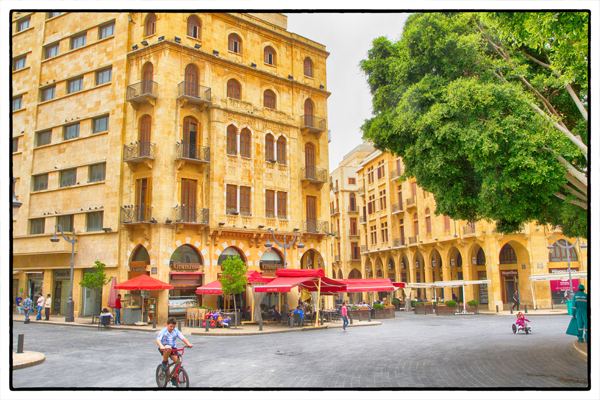Sunday afternoon I walked around Beirut’s reconstructed downtown district, the Solidere Area, and decided to have lunch at a stylish café across from the famous 1930s clock tower, in what is known as the Place de l’Ètoile or, to the locals, Nejmeh Square. The square, built in an Art Deco style by the French in the early 20th century (and a big reason for why Beirut was often called the “Paris of the Middle East”) suffered major damage during the Lebanese Civil War (1975-1990) but the government has done an amazing job restoring the neighborhood to its pre-war glitz in a relatively short time.
Except that there’s something vaguely off about Nejmeh Square. The four-sided clock is there. The buildings have, for the most part, been rebuilt (specifically to look almost exactly the way they did before the war). There are shops and cafes and businesses—all the things you would expect to find in the center of any capital city. Yet it stills feel eerily empty. Here it was on a cool but clear Sunday afternoon and other than a handful of children riding their bikes in circles while their parents nervously watched, there was almost no activity around the Place de l’ Ètoile. A few people eating lunch on the sidewalks outside the cafes; soldiers, clutching tight to their automatic weapons, standing guard on the street corners; a city worker picking up trash. That was about it. No hustle and bustle. No energy. No cheerful enjoyment of the environment; no exulation of spirit, no joie de vivre. Instead, the city center felt dead. And rather spooky.
Tags: Beirut, Lebanon, Place de l'Etoile


Recent Comments